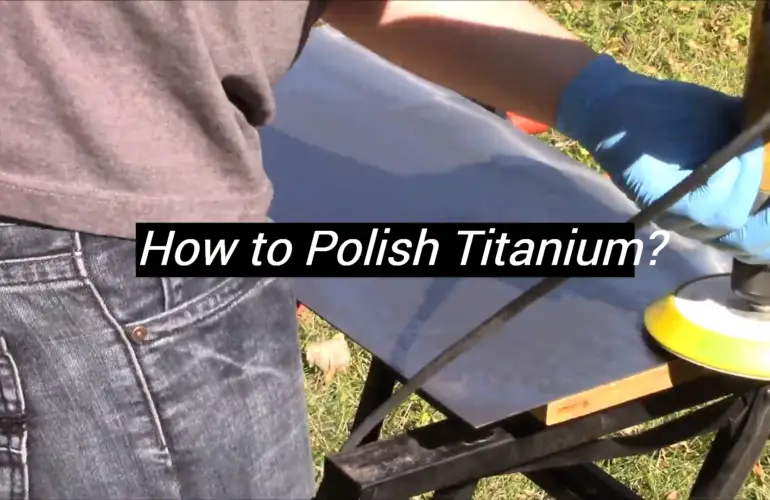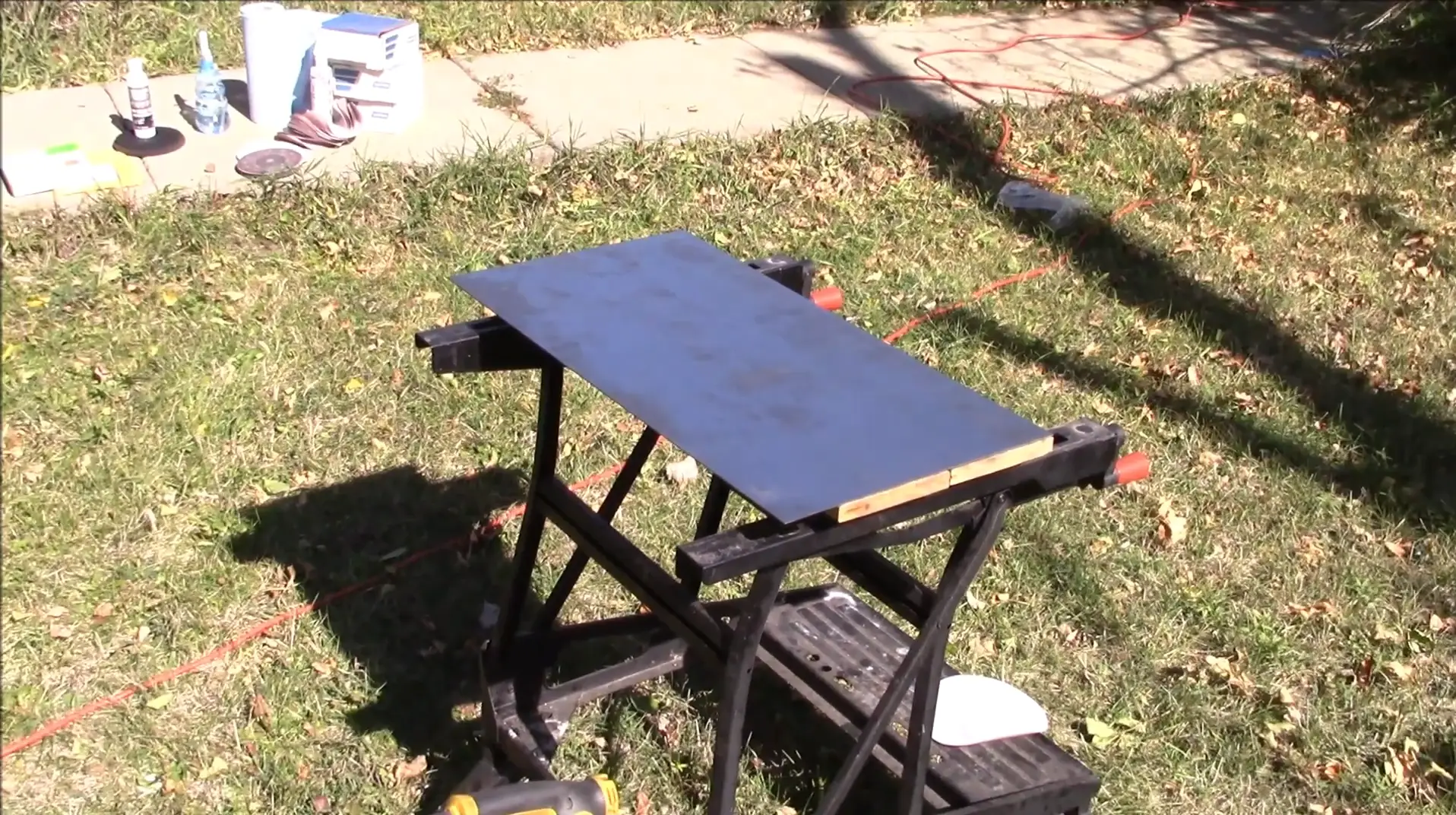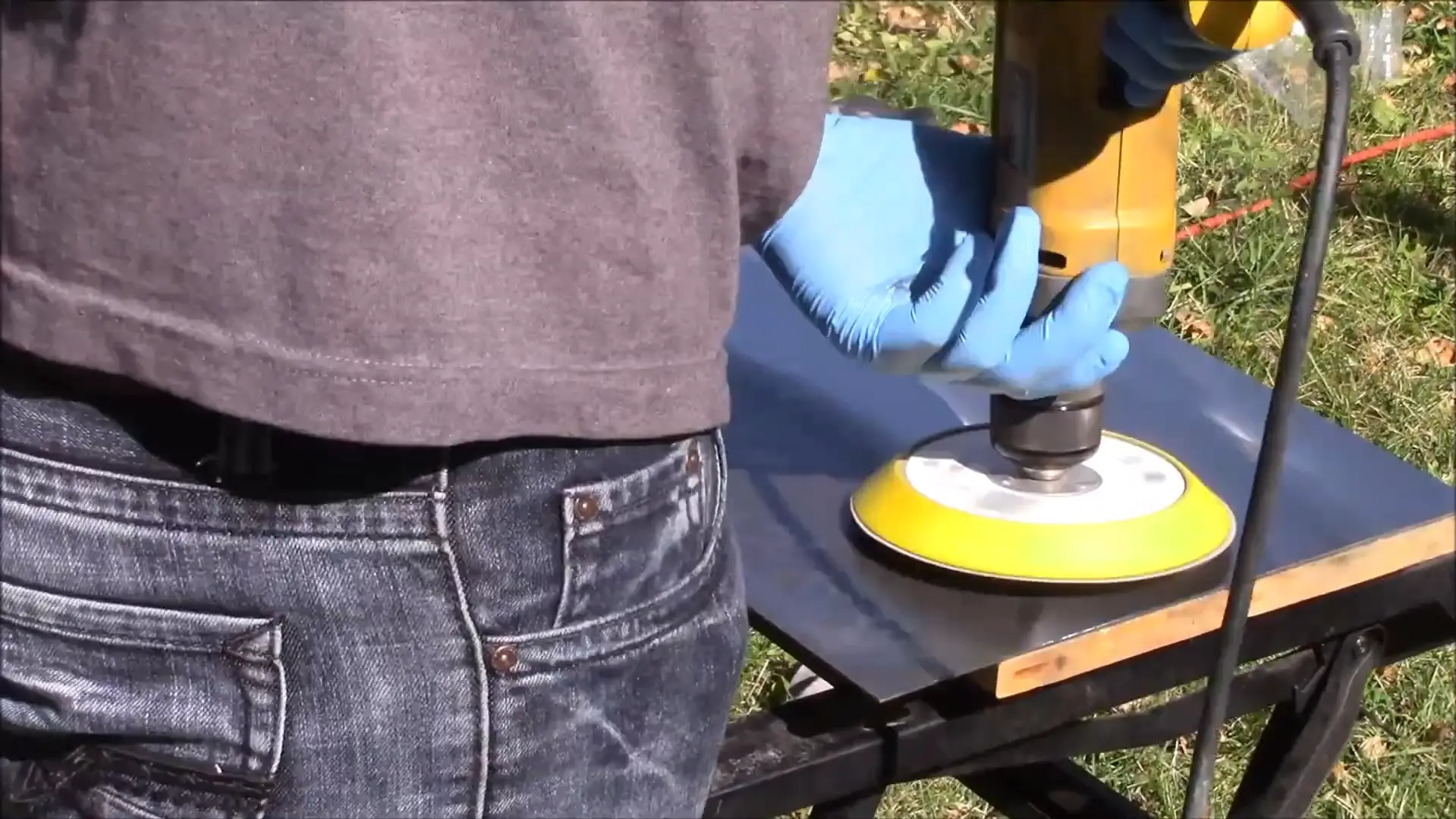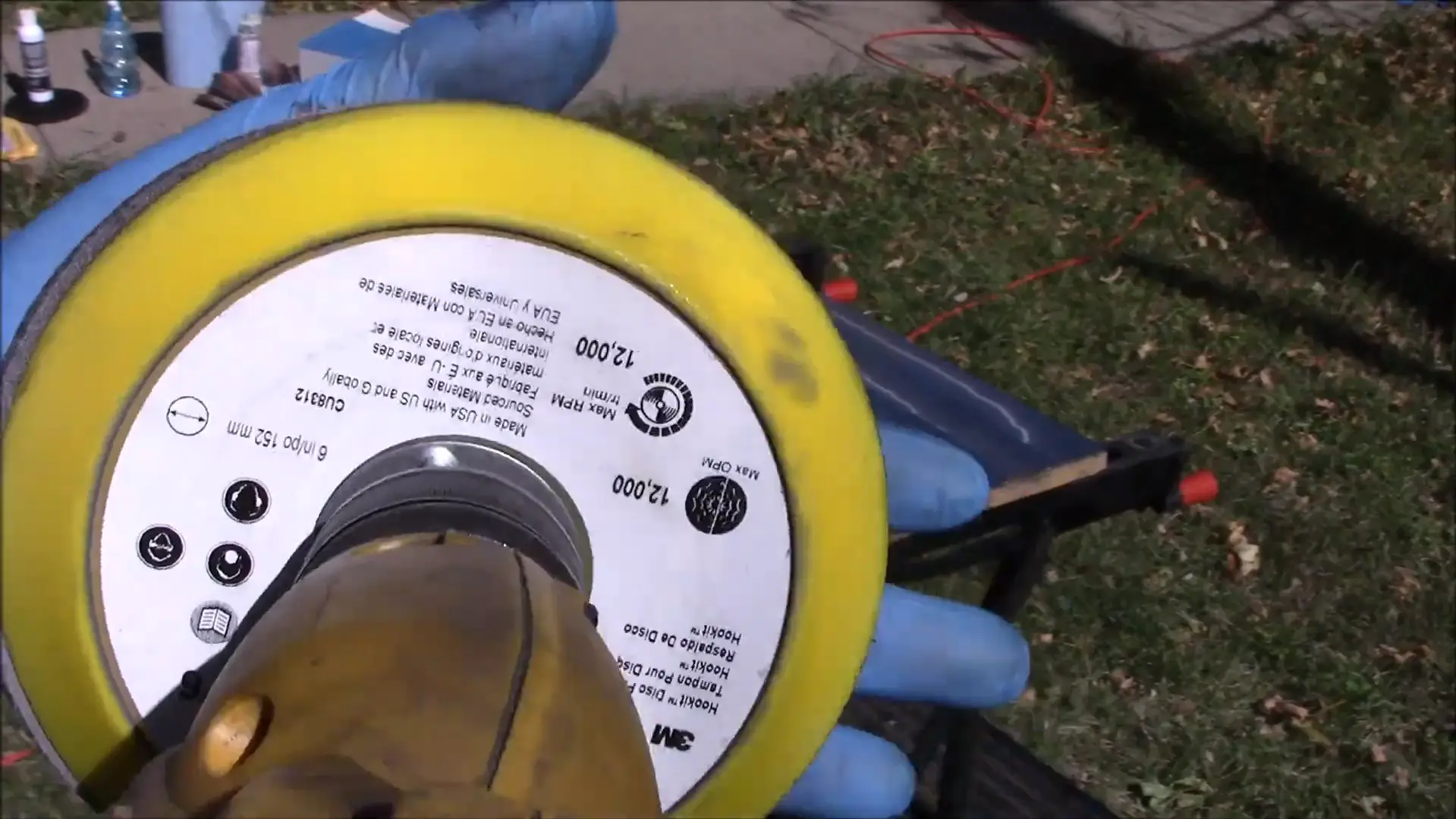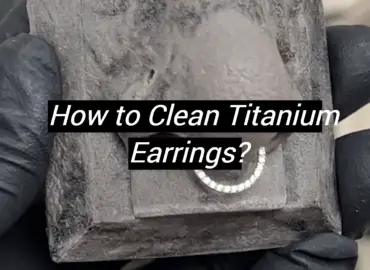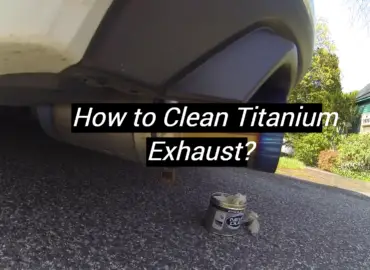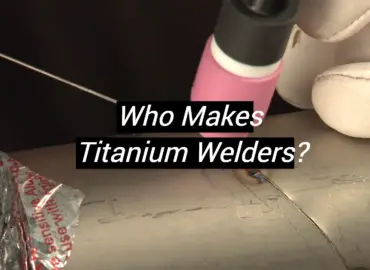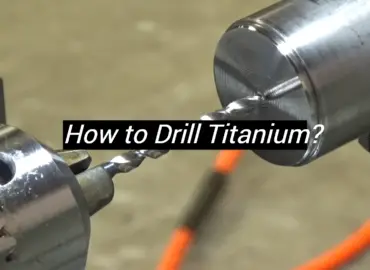Titanium is a highly durable and corrosion-resistant metal that is widely used in different industries, from aerospace to medical devices. While titanium is an inherently strong and durable metal, sometimes you need to polish its surface for various reasons. Titanium polishing is a process that involves removing any scratches or imperfections on the metal surface to get a smooth and reflective finish. In this blog post, we’ll walk you through everything you need to know about titanium polishing – from its purpose to methods and tips.
Titanium Polishing: What It Is
Polishing titanium involves smoothing out its surface using abrasive tools or materials, such as sandpaper or a polishing cloth. These methods are used to remove scratches, scuffs, and other blemishes that accumulate on the surface of the metal over time. Polishing helps restore the shine and luster of the titanium piece, giving it a brand-new appearance.
There are numerous benefits to polishing your titanium jewelry. The primary reason is to maintain their aesthetic appeal. Over time, titanium jewelry can become dull and unattractive due to exposure to environmental factors like dust and sweat. Polishing restores the metal’s sheen, making it look like new again. Another benefit is that polishing helps to prevent the development of rust or corrosion, which can damage the metal and make it harder to clean later on. [1]
There are several methods for polishing titanium, depending on the type of surface blemish you’re trying to remove and the tools or materials you have available. One common method is to use a polishing cloth made specifically for titanium. These cloths contain the right amount of polishing compounds to gently remove tarnishes and other blemishes. A buffing wheel is another popular method, used for more heavy-duty polishing. It is a machine that uses abrasive compounds to buff out blemishes on a titanium surface. [2]
While titanium is a strong and durable metal, it’s important to use the right tools and techniques to avoid inadvertently damaging it during the polishing process. Be sure to avoid using abrasive materials, like steel wool or sandpaper, which can scratch the titanium. Polishing should also be done gently in order to avoid overheating the metal which can cause loss of colour. For the more delicate pieces, like jewelry, it’s recommended to use a microfiber cloth to polish the titanium.
Importance of Polishing in Metal Manufacturing
Metal manufacturing is an intricate process that requires high-quality precision to produce a finished product of high quality. The quality of a piece is not only determined by the material used, but also by its appearance. Polishing is a crucial process that plays a really important role in the finished metal product. It helps to remove impurities, scratches, and other unwanted marks on the metal surface, providing a smooth and lustrous appearance. Some of the factors that prove the importance of polishing are mentioned below.
Help with Material Preservation
Polishing is essential in metal manufacturing as it helps to preserve the material being worked on. The polishing process helps to remove any unwanted marks on the material surface that could lead to corrosion or rusting of the metal. Polishing helps to protect the material surface from moisture, contaminants, and other pollutants that can quickly degrade the quality of the final product. This ensures that the metal product lasts longer and stays in excellent condition.
Enhancing Durability
Polishing is crucial to the durability of the finished metal product. A polished metal surface is not only corrosion-resistant, but it is also resistant to various scratches. The removal of scratches and other imperfections from the metal surface during the polishing process helps to make the product much more durable. A polished product is less likely to chip or crack under pressure. High-quality polishing guarantees that the product will have a long-lasting lustrous appearance that is easy to maintain.
Better Finish
Polishing is necessary as it helps to provide a better finish to the metal product. A polished metal surface reflects light, and this enhances the overall appearance of the product. Polishing helps to remove any blemishes on the metal surface, providing a smooth texture. This improves the overall look of the product and makes it more appealing to the eye.
Quality Control
Polishing plays a critical role in quality control in metal manufacturing. It helps to identify any discrepancies in the material quality, especially when handling high-end finishes. The process helps to identify defects and eliminates any impurities that can affect the quality of the final product. Polishing ensures that the product conforms to the required quality standards, making it more valuable and more appealing to customers. [1]
Value Increase
The final reason why polishing is important in metal production is that it helps to increase the value of the final product. Polishing allows metal products to be made more valuable and desirable in the market, making them stand out in comparison to less polished products. A high-quality polished surface gives the product a premium look that customers are willing to pay more for. The consistent quality of a polished product helps create a positive brand reputation and can create customer loyalty.
Polishing is not just a superficial process; it has functional and real-world benefits as well. Investing in high-quality polishing is therefore critical in the process of metal manufacturing. Polishing is the finishing touch that transforms a piece of metal into a piece of art.
Different Ways for Titanium Polishing
The process of polishing titanium involves making the surface of an object more even, shiny, and attractive. Polishing titanium can help enhance its durability, corrosion resistance, and overall appearance. It is important to know several ways for titanium polishing, so let’s take a closer look at some of them.
Chemical Polishing
Chemical polishing is a method that involves immersing the titanium material in a chemical solution, causing the surface layers to dissolve, leaving a smooth, polished surface. Chemical polishing is most effective for large and flat titanium surfaces. It is an excellent option for titanium parts that require high optical clarity such as mirrors and lenses. This type of polishing can also help to reduce the amount of surface stress, which can increase fatigue resistance. [1]
Mechanical Polishing
Mechanical polishing is a process that involves using abrasives like sandpaper, polishing pads, or cloths to remove surface imperfections like scratches, gouges, or dings. This method is ideal for titanium parts that are not flat, such as tubes and rods. Mechanical polishing can be done with either manual or mechanical processes, and the result is a smooth and uniform surface. [1]
Electrochemical Polishing
Electrochemical polishing is a method that involves using a current to remove surface imperfections. The titanium material is placed in an electrolyte solution, and a current is applied, causing the material to dissolve until a smooth surface is achieved. This method is ideal for complex geometries and parts with small features. Electrochemical polishing offers a high level of control over the finish, making it ideal for medical implants where the surface has to be specially designed to promote tissue growth. [1]
In conclusion, polishing titanium offers many benefits, including improved durability, corrosion resistance, and a better appearance. The optimal choice of polishing method depends on the application and the part specifications.
Steps for Titanium Polishing
As we already know, titanium can become dull, scratched, or discolored, which can be frustrating. Luckily, there is a simple solution to restore that attractive shine, and it requires only a few steps to polish it back to its former glory. Here we’ll discuss the four steps you need to follow to polish your titanium piece to perfection.
Step 1 – Degreasing and Cleaning Process
The first step is to ensure that your titanium piece is free from dirt, dust, and grease. Begin with a gentle cleaning process to remove surface debris for better polishing. Make a solution of warm water, mild dish soap, and a scrub brush to loosen the grime or oil. Rinse your piece with clean water and dry it with a soft cloth. Be gentle to avoid scratches, as any etches or imperfections will be visible in the final result.
Step 2 – Sanding Process
With a clean, dry piece, choose the finest sandpaper with 800-grit to rub the surface of the titanium piece gently. The idea is to remove scratches and other marks left behind after cleaning. Sand in one direction and avoid back and forth movement. Take it easy to avoid applying too much pressure, which could result in a rough finish. Rotate the sandpaper regularly, so it wears out evenly, and keep checking the surface to ensure you’ve covered it entirely.
Step 3 – Buffing Process
Buffing involves using special buffing compounds to polish the entire surface. You’ll need various types of polishing wheels – felt, flannel, and cotton. Choose a soft wheel, attach it to your drill or rotary tool, and load it with a polishing compound. Hold the titanium piece against the spinning wheel and gradually move around the surface in a circular motion. Keep a steady pace and don’t apply too much pressure so you don’t heat up the metal. Repeat this process with each of the different polishing wheels, using finer polishing compounds until the piece achieves the desired luster.
Step 4 – Final Finish
After buffing, clean the excess polish residue with a soft cloth and inspect your work. There might be some faint scratches on the surface, so grab the sandpaper and use it lightly against the grain to remove them. Finally, rub the surface of your titanium piece with a microfiber cloth to remove any smudges and bring out the shine. With the correct procedure and working patiently, your titanium piece will look as good as new in no time.
Polishing your titanium piece is a simple process if you follow these four steps. Don’t be afraid to experiment with different polishing compounds or sandpaper grits until you find the perfect combination to bring out the shine you want. Enjoy the process and see the transformation for yourself!
The Benefits of Polishing Titanium Parts
When it comes to the industrial and manufacturing sectors, a polished titanium surface is often overlooked. But did you know that polishing titanium parts has a whole host of benefits? Here we are highlighting some of them!
- Enhanced Durability. A lot of industries rely on equipment made of titanium parts. Whether it’s for aerospace equipment, medical implants, or even consumer goods, it’s essential that these parts are durable. Polishing titanium parts can enhance their durability by smoothing out rough or uneven surfaces. This allows for better protection against corrosion, increases resistance to wear and tear, and significantly extends the lifespan of the parts. [4]
- Improved Appearance. Although the function of titanium parts is a top priority, aesthetic appeal mustn’t be underestimated. Polishing titanium parts improves the appearance by giving it a glossy finish, making it stand out and look professional. This is especially critical for industries that manufacture consumer goods like jewelry, automotive, and even electronics. For these industries, a polished titanium surface can increase the perceived value of their products.
- Better Performance. When titanium parts are polished, their surfaces become more refined. This means that they’re less likely to have imperfections that can interrupt their performance. For high-performance applications, this is especially important because one minor flaw can lead to equipment failure. By polishing titanium parts, it helps to prevent such imperfections, resulting in better performance and thus better overall productivity.
- Improved Efficiency. Polishing titanium parts can improve the efficiency of their function. The smooth surface allows for better airflow through equipment. As a result, equipment can operate at a lower temperature and be more energy-efficient. This is especially true for industrial and manufacturing processes that rely on high-temperature equipment like turbines or heat exchangers.
- Cost-Effective. Lastly, because polished titanium parts are more resistant to wear and tear, they have a longer lifespan. This means that the cost of repairs and maintenance can be significantly reduced. Additionally, a polished surface requires less frequent cleaning, further decreasing costs.
When considering the long-term value of titanium parts, it’s essential to invest in proper polishing techniques to ensure that the parts are performing to their full capacity. So, if you’re looking to upgrade your equipment’s performance and lifespan, remember that polishing titanium parts can add great value to your industry’s process.
Ways of Application of Polished Titanium Items
Titanium is highly durable, corrosion-resistant and has an incredibly attractive silver finish.This metal also has a polished variant that has a mirror-like surface that enhances its aesthetic appeal. Now we’re going to learn about the many ways of applying polished titanium items that we come across.
Decorative Pieces
The first utilization that pops into our minds is the incorporation of polished titanium in furniture and decoration pieces. The polished finish gives the item a shine and makes it stand out, making it an enticing choice for design enthusiasts. Polished titanium sculptures, light fixtures, and wall art are an example of such items that experts in the field of interior and exterior design favor the most.
Aerospace Industry
Titanium is a top pick when it comes to producing aircraft components, given its strength-to-weight ratio. The aerospace industry makes extensive use of polished titanium items to increase weight reduction, including propellers, landing gear, exhaust systems, and much more. Due to its premium strength and low density, titanium has also become an irreplaceable element in the aerospace sector.
Surgical Procedures
Titanium’s characteristics make it a piece of essential equipment for surgical procedures. Polished titanium items are often used for medical implants, including screws, pins, and plates. A polished finish assists in reducing the bio-reaction, allowing the implants to settle smoothly, in turn, reducing the chance of infection and complications.
Jewelry
Titanium’s unique combination of strength, durability, and weightlessness empowers jewelers to craft elegant and lightweight jewelry exquisitely. Titanium’s polished surface, when used to create jewelry, adds to its shine and craftsmanship. The advantage of titanium-made jewelry is that it’s hypoallergenic, biocompatible, and resistant to corrosion. Thus, it makes it an ideal choice for those that have sensitive skin and developed nickel allergy.
Sporting Goods
Several sports equipment manufacturers are turning towards polished titanium due to its incredible strength and lightweight. The polished surface enhances its sleek look and is sure to make it stand out in the sports arena. Examples of sporting goods that have incorporated polished titanium are golf clubs, bicycles, tennis rackets, ice-skates, and many more. [4]
Titanium is indeed a metal that has a long list of advantages due to its usability and unique physical and chemical properties. The polished variant of titanium is gaining recognition because of its sleek finish, which is resulting in wider application possibilities in different industrial sectors. Its multifaceted characteristics enable designers and manufacturers to incorporate polished titanium items in furniture, aerospace, medical equipment, jewelry, and sporting gear, making it an innovative solution to many challenges encountered in different industries.
FAQ
What is the best polishing compound for titanium?
There are several options, but most experts agree that diamond polishing compounds are the best for achieving a superior finish on titanium. Diamond compounds contain tiny diamond particles that are suspended in a solution of oil or water. They work by grinding away at the metal surface, effectively removing surface defects and providing an even, polished finish. Diamond compounds also produce less heat and pressure than other compounds, which is important when working with sensitive metals like titanium.
Is it easy to polish titanium?
Polishing titanium may be challenging, but it’s essential to maintain its appearance correctly. Knowing the factors that affect the process and understanding different techniques will greatly contribute to achieving the desired result. Always remember to take things slowly and avoid shortcuts, as rushing the cleaning process can lead to unfavorable results. So, is it easy to polish titanium? The answer is no, but with a little effort, patience, and the right tips, it’s definitely achievable.
Can titanium be polished to a shine?
Titanium can be polished to a shine using a variety of methods, including mechanical, chemical, and electrochemical polishing. Each method has its advantages and disadvantages, and the choice often depends on the user’s preference and expertise. Whether you’re polishing titanium for an aerospace application or a jewelry piece, it’s essential to have the right tools and knowledge to achieve the desired finish. With proper polishing techniques, titanium can look as shiny and polished as any other metal, making it a versatile and attractive material to work with.
Why is titanium difficult to polish?
One of the main reasons why titanium is challenging to polish is its chemical and physical properties. Titanium has a high melting point (1668°C) and is highly reactive, which makes it challenging to work with. The metal has a strong affinity to oxygen and other elements, and it easily forms a protective oxide layer that protects it from further corrosion. While this layer is beneficial, it also presents a challenge for metalworkers who want to polish it, as it’s hard to remove the oxide layer without damaging the underlying metal.
Impurities in the metal can also be a factor in titanium’s difficult polishing. Impurities such as nitrogen, carbon, and hydrogen can alter the physical and chemical properties of titanium, making it harder to machine or polish. These impurities can cause the formation of brittle phases within the metal, which can lead to cracks, pits, and voids during polishing. Manufacturers have to balance the purity of the metal against the cost of production and the intended use of the final product.
Does titanium lose its shine?
Titanium does have the potential to lose its shine over time due to regular wear and tear, exposure to chemicals, and improper care. However, by taking simple steps to clean, polish, and store your titanium items properly, you can keep them looking as good as new for years to come. Remember to avoid using harsh chemicals or abrasive sponges, opt for a polished finish, and store your items separately to prevent scratches and discoloration. With a little TLC, your titanium jewelry and accessories will continue to shine bright!
Can sandpaper be used on titanium?
Working with titanium requires some special considerations, but it’s certainly possible to use sandpaper on this metal (as long as you follow certain guidelines). For best results, invest in specialized tools, take care when finishing titanium, and keep your work area clean to avoid contamination. With these tips in mind, you should be able to work with titanium confidently and achieve the results you’re looking for.
What are the methods of titanium polishing?
The two most common methods of titanium polishing are mechanical and electrochemical. In mechanical polishing, abrasive substances are used to remove any scratches or deformities on the titanium surface. This method requires a series of polishing steps with gradually finer abrasive materials to achieve a glossy finish. Electrochemical polishing, on the other hand, utilizes an electrolyte solution and an electrical current to dissolve the surface of the metal. This method can help achieve a uniform finish even on complex-shaped titanium surfaces that are difficult to polish mechanically.
What may be used to polish titanium?
Polishing titanium can improve its aesthetic appeal and functional properties. You can use abrasive pads, polishing compounds, a Dremel tool, electrolytic polishing, or professional polishing services to achieve the desired shine and finish. It is essential to select the appropriate method and tools based on the type of titanium part you want to polish and the level of precision required. With the right tools and techniques, you can restore the beauty and durability of your titanium parts and enjoy their many benefits in various industries.
What grit to use to polish titanium?
The first type of grit you can use for polishing titanium is a coarse grit. Coarse grits are used for removing scratches, dents, and other imperfections on the titanium surface. The recommended grit size for a coarse grit is around 60 to 120. After using the coarse grit, you will need to use a medium grit to smoothen out the surface. The recommended grit size for a medium grit is around 200 to 400. Next, you will need to use fine grit to bring out the shine in your titanium. The recommended grit size for a fine grit is around 800 to 1200. [3]
Useful Video: How To Sand and Polish Titanium To Mirror Finish
Conclusions
In conclusion, titanium polishing is an essential process to achieve a polished, smooth surface on the metal material. From improving aesthetics to enhancing functionality, polishing has several benefits for titanium applications in different industries. There are various methods available to polish titanium, including chemical, mechanical and electrochemical. Polishing your titanium jewelry helps to maintain its beauty and durability. Whether you prefer to use a polishing cloth or a buffing wheel, it’s important to take proper precautions to avoid causing damage to your pieces. With the right techniques, you can restore the luster of your titanium accessories and keep them looking like new for years to come. So, keep your polishing cloth handy! By following the recommended tips, you can achieve a glossy, uniform finish that maintains your titanium’s shine and integrity.
References:
- https://proleantech.com/polish-titanium-ultimate-guide/#:~:text=Use%20a%20clean%2C%20dry%20microfiber,the%20desired%20level%20of%20shine.&text=Use%20a%20degreaser%20or%20solvent%20to%20remove%20any%20polishing%20compound,the%20surface%20thoroughly%20with%20water.
- https://www.wikihow.com/Polish-Titanium
- https://www.instructables.com/How-to-Polish-Titanium/
- https://waykenrm.com/blogs/titanium-polishing/

